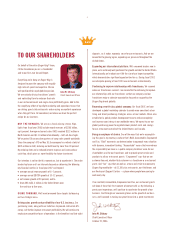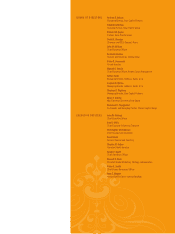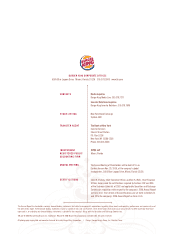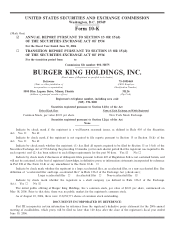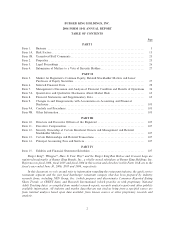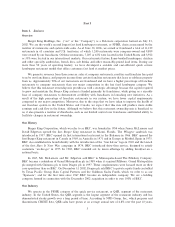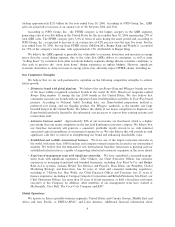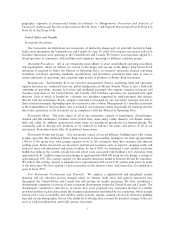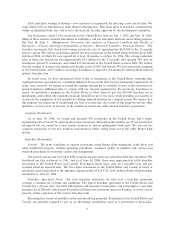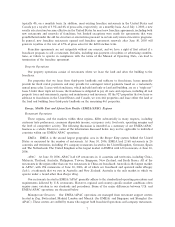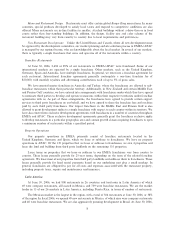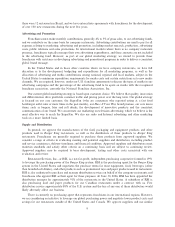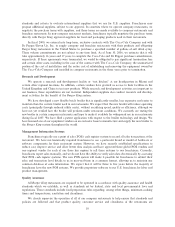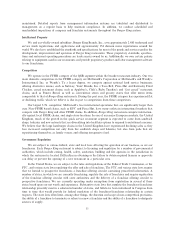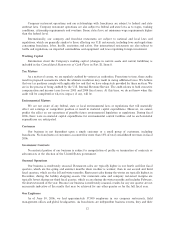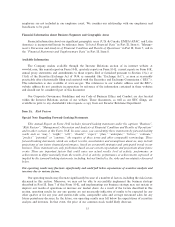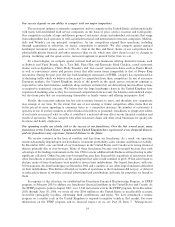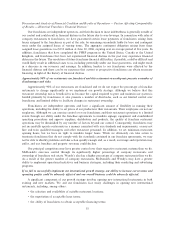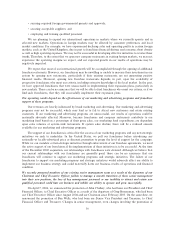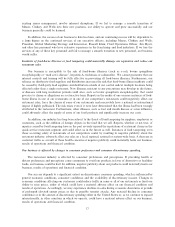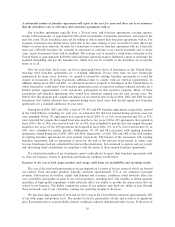Burger King 2006 Annual Report Download - page 20
Download and view the complete annual report
Please find page 20 of the 2006 Burger King annual report below. You can navigate through the pages in the report by either clicking on the pages listed below, or by using the keyword search tool below to find specific information within the annual report.Menu and Restaurant Design. Restaurants must offer certain global Burger King menu items. In many
countries, special products developed to satisfy local tastes and respond to competitive conditions are also
offered. Many restaurants are in-line facilities in smaller, attached buildings without a drive-thru or in food
courts rather than free-standing buildings. In addition, the design, facility size and color scheme of the
restaurant building may vary from country to country due to local requirements and preferences.
New Restaurant Development. Unlike the United States and Canada, where all new development must
be approved by the development committee, our market planning and site selection process in EMEA/APAC
is managed by our regional teams, who are knowledgeable about the local market. In several of our markets,
there is typically a single franchisee that owns and operates all of the restaurants within a country.
Franchise Restaurants
At June 30, 2006, 2,494 or 89% of our restaurants in EMEA/APAC were franchised. Some of our
international markets are operated by a single franchisee. Other markets, such as the United Kingdom,
Germany, Spain and Australia, have multiple franchisees. In general, we enter into a franchise agreement for
each restaurant. International franchise agreements generally contemplate a one-time franchise fee of
$50,000, with monthly royalties and advertising contributions each of up to 5% of gross sales.
We have granted master franchises in Australia and Turkey, where the franchisees are allowed to sub-
franchise restaurants within their particular territory. Additionally, in New Zealand and certain Middle East
and Persian Gulf countries, we have entered into arrangements with franchisees under which they have agreed
to nominate third parties to develop and operate restaurants within their respective territories under franchise
agreements with us. As part of these arrangements, the franchisees have agreed to provide certain support
services to third party franchisees on our behalf, and we have agreed to share the franchise fees and royalties
paid by such third party franchisees. Our largest franchisee in the Middle East and Persian Gulf is also
allowed to grant development rights to a single franchisee with respect to each country within its territory. We
have also entered into exclusive development agreements with franchisees in a number of countries throughout
EMEA and APAC. These exclusive development agreements generally grant the franchisee exclusive rights
to develop restaurants in a particular geographic area and contain growth clauses requiring franchisees to open
a minimum number of restaurants within a specified period.
Property Operations
Our property operations in EMEA primarily consist of franchise restaurants located in the
United Kingdom, Germany and Spain, which we lease or sublease to franchisees. We have no property
operations in APAC. Of the 139 properties that we lease or sublease to franchisees, we own 4 properties and
lease the land and building from third party landlords on the remaining 135 properties.
Lease terms on properties that we lease or sublease to our EMEA franchisees vary from country to
country. These leases generally provide for 25-year terms, depending on the term of the related franchise
agreement. We lease most of our properties from third party landlords and sublease them to franchisees. These
leases generally provide for fixed rental payments based on our underlying rent plus a small markup. In
general, franchisees are obligated to pay for all costs and expenses associated with the restaurant property,
including property taxes, repairs and maintenance and insurance.
Latin America
At June 30, 2006, we had 808 restaurants in 26 countries and territories in Latin America of which
69 were company restaurants, all located in Mexico, and 739 were franchise restaurants. We are the market
leader in 13 of our 26 markets in Latin America, including Puerto Rico, in terms of number of restaurants.
The Mexican market is the largest in the region, with a total of 304 restaurants at June 30, 2006, or 38%
of the region. In fiscal 2006, we opened 49 new restaurants in Mexico, of which nine were company restaurants
and 40 were franchise restaurants. We are also aggressively pursuing development in Brazil. At June 30, 2006,
8


